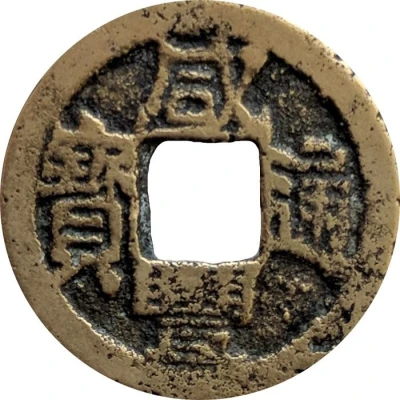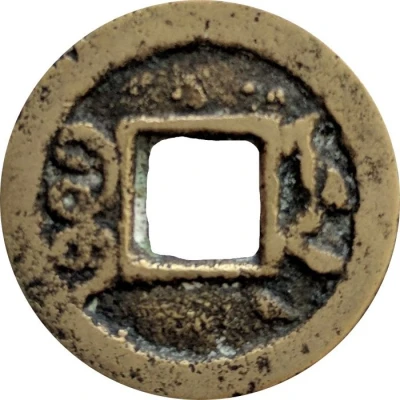1 Cash - Xianfeng Tongbao; Boo-joo ND
| Brass | - | 21 mm |
| Issuer | Empire of China |
|---|---|
| Emperor | Qing dynasty › Xianfeng (咸豐帝) (1850-1861) |
| Type | Standard circulation coin |
| Years | 1851-1861 |
| Value | 1 Cash |
| Currency | Cash (621-1912) |
| Composition | Brass |
| Diameter | 21 mm |
| Shape | Round with a square hole |
| Technique | Cast |
| Orientation | Medal alignment ↑↑ |
| Demonetized | Yes |
| Updated | 2024-10-03 |
| Numista | N#226279 |
|---|---|
| Rarity index | 100% |
Reverse
Two Manchu words (read vertically) separated by the hole.
Script: Mongolian / Manchu
Lettering: ᠪᠣᠣ ᠵᠣᠣ
Translation: Boo-joo
Edge
Plain
Comment
The exact location of the 'Boo-joo' mint is unknown, although the various types of reverse symbols indicate somewhere around Yunnan, Guizhou, or Sichuan. With many symbols also beeing found on Yunnan-fu or Dongchuan coins, it is possible this is a local mintmark from the Yunnan (similar to Boo-dung).Another Boo-joo was used under Tongzhi, although that mintmark includes a dot. It is possible the dot is correcting the spelling from the Xianfeng coins, or it is an entirely different mint.
Interesting fact
One interesting fact about the Xianfeng Tongbao (Boo-joo) coin is that it was the first coin to feature the Chinese character for "Tong" (通) which means "circulation" or "currency" in English. This character was added to the coin's design to indicate that it was a standardized currency that could be used throughout the empire. This was a significant innovation in Chinese currency at the time, as previous coins had often been issued by local authorities and were not always accepted as legal tender in other regions. The Xianfeng Tongbao coin was a key step in the development of a standardized national currency for China.

